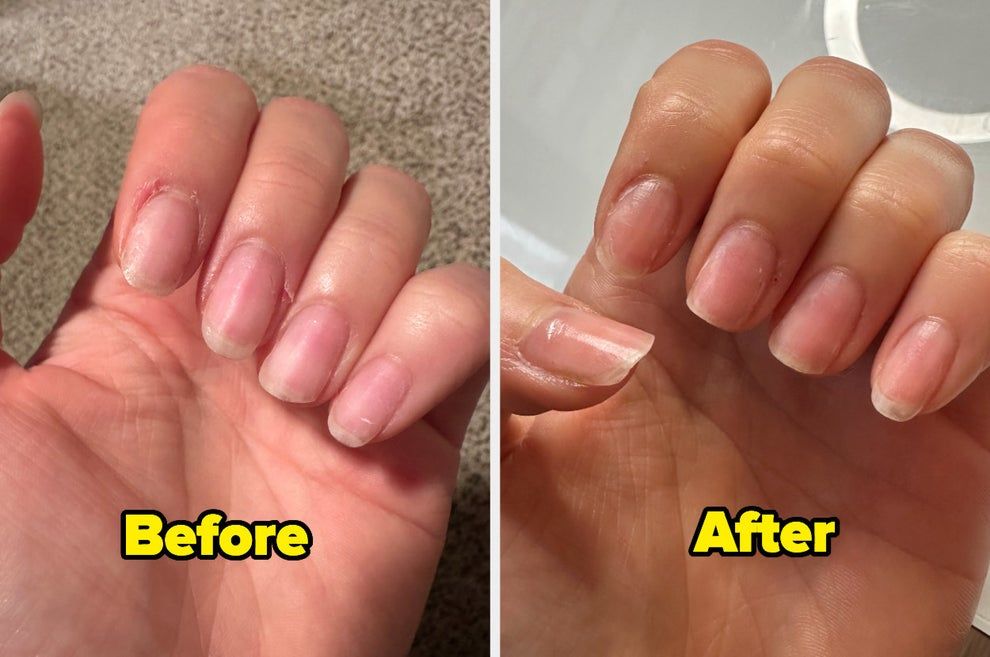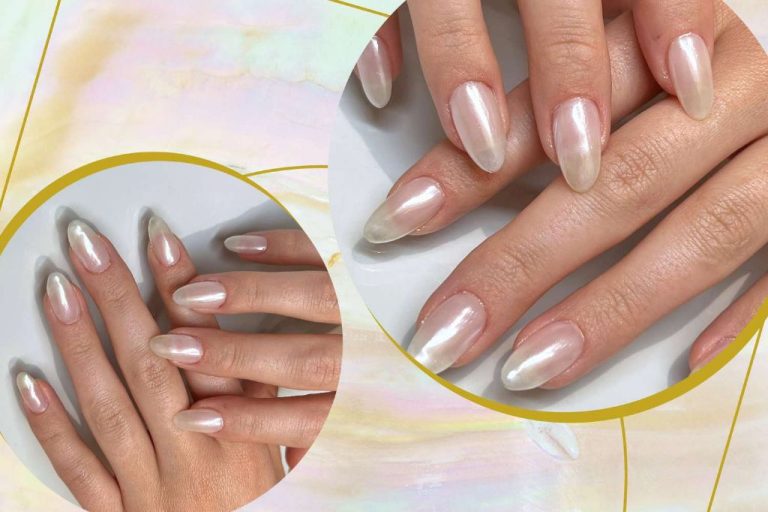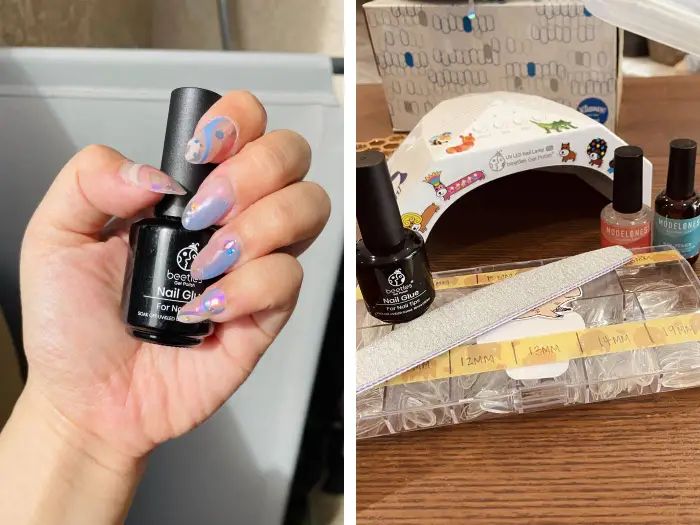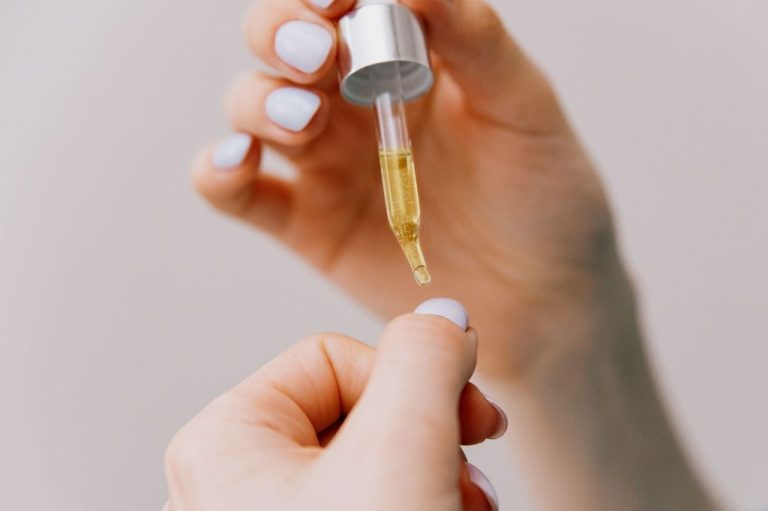Goodbye Gel Residue! Safe & Gentle Ways To Remove Gel Polish At Home
Gel polish has become a popular nail service due to its durability and long-lasting shine. However, when it’s time to remove gel polish, many people struggle to get all of the sticky residue off completely. Gel polish is formulated to bond to the natural nail for 2-3 weeks, so it can be quite stubborn to remove. The main problem is that not all of the layers—the base coat, color coats, and top coat—fully dissolve when soaked in pure acetone. This leaves a gummy, sticky feeling on the nails that is difficult to scrub off.
Trying to peel and scratch off the residue can damage the natural nail. And walking around with tacky nails not only feels uncomfortable, but allows dirt and bacteria to build up underneath the remaining gel polish. That’s why it’s important to find gentle, effective ways to break down the gel layers entirely and reveal smooth, clean nails. This article will explore handy homemade solutions that remove sticky gel polish safely at home.
Soak Cotton Pads in Acetone
The most effective and fastest way to remove gel polish at home is by soaking cotton pads in pure acetone. You’ll want to use 100% acetone rather than an acetone mixture with additives, which can leave behind residue on the nails. Pronto 100% Pure Acetone is a top choice recommended by professionals.
Start by filing the top layer of the gel polish to rough up the surface. This allows the acetone to penetrate more easily. Next, place a cotton pad soaked in acetone on each nail and wrap your fingers in foil. The foil helps trap the acetone against the nails so it can break down the polish. Leave the acetone-soaked pads on for 10-15 minutes, then gently wipe away the softened gel residue with a cotton swab.
Repeated acetone soaks may be necessary for thick or stubborn gel polish. Always monitor closely to avoid overexposure, which can dry out the nails. Moisturize after removing all residue.
Scrape Off Top Coat
One method to remove gel polish is to scrape off the top coat. This helps breakdown the layers of polish before soaking in acetone. Use a wooden cuticle pusher or plastic scraper gently across the nail to lightly scrape off the shiny top layer. Be careful not to dig into the nail bed. Light, short strokes work best to gradually lift the gel top coat without damaging nails.
As board-certified dermatologist Shari Lipner, MD, PhD, FAAD advises: “Gently scrape off the top layer of gel with a cuticle pusher or tool before soaking nails in acetone” (Source). This preps nails for easier removal of color.
Use Foil Wraps
One effective method for removing gel polish at home is to use foil wraps. This helps the acetone remover penetrate the gel polish layer more effectively.
Start by soaking cotton balls or pads in pure acetone nail polish remover. Make sure the cotton is saturated thoroughly. Then, take a small piece of aluminum foil and wrap it around the tip of your nail so that the acetone-soaked cotton is nestled against the nail.
The foil helps press the acetone-soaked cotton firmly against the gel polish, allowing the acetone to penetrate through the layers. Let your nails soak with the foil wraps for 10-15 minutes. The gel polish should start flaking off the nail. Use a cuticle pusher stick or orangewood stick to gently scrape off the softened gel polish.
Foil wraps speed up gel polish removal by keeping the acetone remover pressed close to the nail. The occlusive barrier helps the acetone work more effectively to break down the bonds in gel polish. Just be careful not to let the pure acetone touch your skin or cuticles as it can dry them out.
Sources:
https://www.goodhousekeeping.com/beauty/nails/a31930661/how-to-remove-gel-nail-polish/
Try an Exfoliating Scrub
After soaking off the gel polish, consider using an exfoliating scrub on your nails and cuticles. This will gently scrub away any remaining gel residue or dead skin cells left behind from the gel removal process. Look for a scrub with jojoba beads, as they are gentler on your skin compared to salt scrubs or scrubs with rougher particles.
According to nail care experts, exfoliating after a gel manicure helps prepare the nails and skin to better absorb moisture and conditioning treatments (source). The scrubbing motion sloughs away dry, dead skin cells and leaves the nails and cuticles smoother. It also lightly buffs the nail plate, which allows moisturizers and oils to penetrate better.
When using a scrub, be gentle and avoid over-scrubbing. Focus on areas like the cuticles and nail edges where gel residue may still be present. Rinse nails thoroughly after scrubbing. Then apply a hydrating cuticle oil or hand cream to nourish the skin.
Use Oil to Break Down Residue
One of the easiest and most effective methods for removing stubborn gel polish residue is to use oil. Oils like olive oil, coconut oil, or almond oil can help break down the remaining gel still stuck to your nails.

Start by generously applying a thick layer of oil directly onto your nails and cuticles. Let the oil sit for 5-10 minutes to give it time to penetrate the gel residue. As the oil soaks in, it will help loosen the adhesive bonds and start lifting the gel away from your nail bed.
After letting it soak for a bit, take a soft cloth or paper towel and start gently scrubbing at your nails. The oil will make the gel polish much easier to remove. You can also try using a soft brush or orange stick to help scrape off any bits of residue.
According to experts at WikiHow, olive or coconut oil works better than acetone to dissolve gel. The oil is able to permeate the layers of gel and break the bonds from underneath.
Continue scrubbing and removing all traces of the gel polish and residue from your nails. The oil soak and scrub method can take a bit longer than acetone, but it is very effective at dissolving gel gently without damaging the natural nail.
Rub With Rubbing Alcohol
Rubbing alcohol can help break down the gel polish and make removal easier. Look for a bottle of 70% isopropyl alcohol, which you can find at drugstores and pharmacies. Pour some onto a cotton pad or paper towel and wipe it over each nail to dissolve the top layer of gel polish.
As you wipe, you’ll notice the gel start to ball up and peel away from the natural nail. The rubbing alcohol breaks down the bonds in the gel polish. Keep wiping until you’ve removed as much gel as possible. According to users on Reddit (https://www.reddit.com/r/RedditLaqueristas/comments/94vsom/rubbing_alcohol_to_remove_gel_polish/), rubbing alcohol works best on gel polish that hasn’t fully cured yet.
Once you’ve wiped away the softened gel, go back and soak nails in acetone to remove any remaining residue. Rubbing alcohol alone might not get all the gel off, but it’s great for breaking it down first before using acetone.
Apply Cuticle Oil
After removing gel polish, it’s important to nourish and moisturize your nails and cuticles. Gel removal can cause dryness and damage to the nail bed. Applying a nourishing cuticle oil is an easy way to replenish moisture and promote healthy nails.
Look for a cuticle oil formulated with natural oils like jojoba, vitamin E, and essential oils. These ingredients will hydrate cuticles, nourish nails, and stimulate growth. Some of the best oils to use after gel removal include:
- Deborah Lippmann It’s a Miracle Pen – contains shea butter, jojoba oil, and vitamins A, C, and E (source)
- L’Occitane Shea Nail and Cuticle Oil – enriched with shea butter (source)
- CND Solar Oil – blend of jojoba, sweet almond, and vitamin E oils (source)
After gel removal, massage a few drops of cuticle oil onto each nail and cuticle. Gently push back cuticles as you massage. Allow the oil to fully absorb. Apply cuticle oil daily to see the best results.
Moisturize Hands
After removing gel polish, it’s important to moisturize your hands to help repair any damage and keep your skin hydrated. Massaging in a rich hand cream or lotion can help condition both your skin and nails after gel removal.
Look for a moisturizer that contains ingredients like shea butter, olive oil, avocado oil, coconut oil, or vitamin E. These ingredients are ultra-hydrating and help strengthen and nourish dry hands and brittle nails. Avoid products with heavy fragrances, dyes or other harsh additives.
Take your time massaging the cream into your hands, nails, and cuticles. The massage will stimulate circulation which brings blood flow to your nails to help them recover. Focus on massaging the nail beds, cuticles, and skin surrounding each nail with small circular motions. Continue massaging until the lotion is fully absorbed.
Apply hand cream multiple times a day, especially after washing hands. Over time, regularly moisturizing will help hydrate your skin and condition your nails to be strong and healthy again after gel removal.
Conclusion
Removing gel polish at home can be done gently and safely with a few simple techniques. The key is to soak cotton pads in pure acetone, which helps break down the layers of gel polish. You can quicken the process by scraping off the top coat first and wrapping your nails in foil. For any remaining residue, use an exfoliating scrub or rub gently with oil or rubbing alcohol. The gel polish should lift off without taking layers of your natural nails with it.
When removing gel polish at home, remember to be patient and gentle. Never pull or peel the polish off, as this can damage your natural nails. The removal process may take 15-30 minutes but allowing the acetone and other products to work prevents you from rushing and causing harm. After removing the gel, apply cuticle oil and hand moisturizer to nourish your nails. With the right technique, you can successfully remove gel polish at home without needing to immediately book your next salon appointment.





